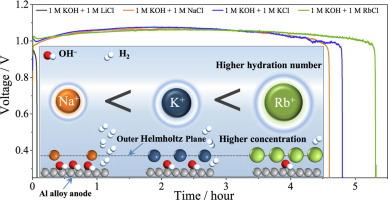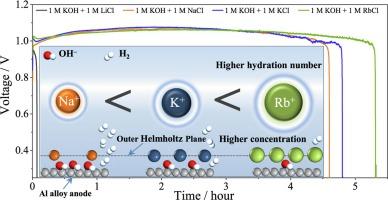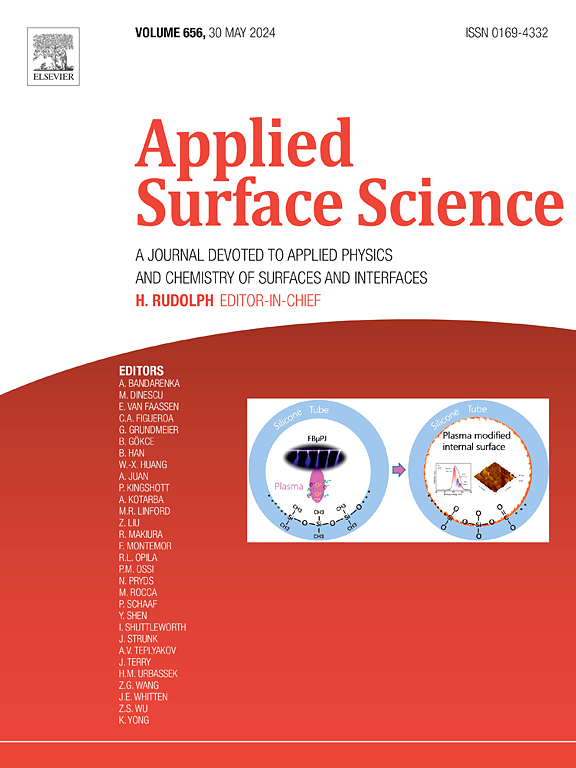Mitigating anodic corrosion in aluminum–air batteries: Effects of alkali metal cation size on electrochemical performance
IF 6.3
2区 材料科学
Q2 CHEMISTRY, PHYSICAL
引用次数: 0
Abstract
Anodic corrosion limits the performance of aluminum–air batteries (AABs) by reducing discharge capacity and hindering energy density. This study proposes a strategy to mitigate anodic corrosion by controlling electrolyte cations to decrease the activity of free water molecules in the anodic corrosion process. Alkali metal cations (Na+, K+, Rb+) are introduced into a 1mol dm−3 KOH solution to examine their solvation properties and effects on free water molecule activity. Results show that larger cations (Na+ < K+ < Rb+) enhance anode discharge capacity by promoting more stable discharge reactions. Raman spectroscopy reveals that as cation radius increases, free water molecule activity decreases due to increased hydration. X-ray photoelectron spectroscopy analysis shows that larger cations favor the formation of corrosion-resistant aluminum compounds like Al2O3 and Al(OH)3, due to their higher concentration in the electric double layer, inhibiting anodic corrosion. This study highlights the critical role of cation solvation in enhancing electrochemical performance and corrosion resistance of AAB anodes.


减轻铝-空气电池的阳极腐蚀:碱金属阳离子大小对电化学性能的影响
阳极腐蚀会降低放电容量和能量密度,从而限制铝空气电池(AAB)的性能。本研究提出了一种减轻阳极腐蚀的策略,即通过控制电解质中的阳离子来降低阳极腐蚀过程中自由水分子的活性。在 1mol dm-3 KOH 溶液中引入碱金属阳离子(Na+、K+、Rb+),研究它们的溶解特性及其对自由水分子活性的影响。结果表明,较大的阳离子(Na+ < K+ < Rb+)能促进更稳定的放电反应,从而提高阳极的放电容量。拉曼光谱显示,随着阳离子半径的增加,自由水分子的活性会因水合作用的增加而降低。X 射线光电子能谱分析表明,较大的阳离子有利于形成 Al2O3 和 Al(OH)3 等耐腐蚀铝化合物,因为它们在电双层中的浓度较高,从而抑制了阳极腐蚀。这项研究强调了阳离子溶解在提高 AAB 阳极的电化学性能和耐腐蚀性方面的关键作用。
本文章由计算机程序翻译,如有差异,请以英文原文为准。
求助全文
约1分钟内获得全文
求助全文
来源期刊

Applied Surface Science
工程技术-材料科学:膜
CiteScore
12.50
自引率
7.50%
发文量
3393
审稿时长
67 days
期刊介绍:
Applied Surface Science covers topics contributing to a better understanding of surfaces, interfaces, nanostructures and their applications. The journal is concerned with scientific research on the atomic and molecular level of material properties determined with specific surface analytical techniques and/or computational methods, as well as the processing of such structures.
 求助内容:
求助内容: 应助结果提醒方式:
应助结果提醒方式:


